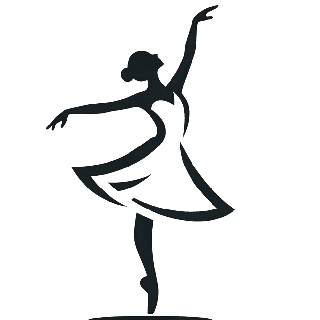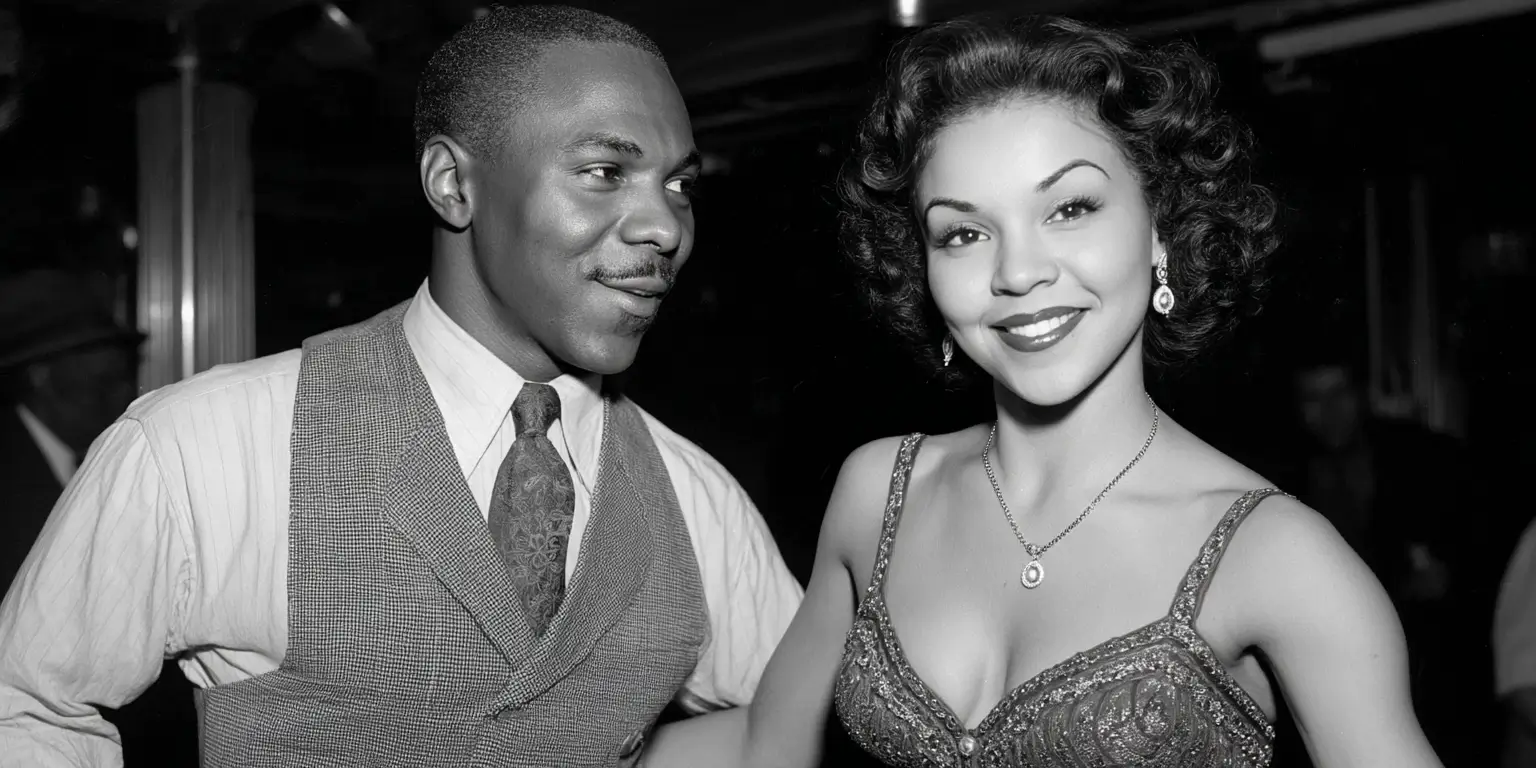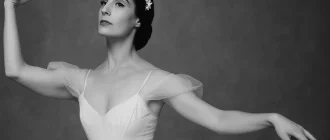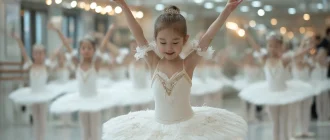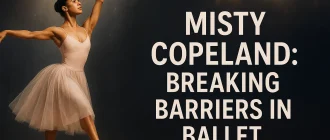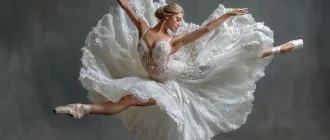African Americans who changed history through dance have left an indelible mark on the performing arts. This article, particularly during Black History Month, introduces five legendary figures whose groundbreaking work in dance broke barriers, created new genres, and had a lasting influence on generations.
Key Takeaways
- Josephine Baker, Katherine Dunham, and Alvin Ailey are pivotal dance figures who entertained and played crucial roles in advocating racial equality and cultural representation.
- Arthur Mitchell and Virginia Johnson broke barriers in ballet, founding institutions that promote diversity and provide platforms for African American dancers.
- Contemporary figures like Charlotte Nebres highlight ongoing efforts to increase representation in dance, inspiring future generations with visibility and new narratives in the art form.
African Americans Who Changed History Podcast
African American Dance History
African American dance history is a vibrant tapestry woven from centuries of tradition, resilience, and innovation. Rooted in the rhythms and movements of traditional African dance, this art form has evolved in tandem with the African American experience, reflecting both the struggles and triumphs of the African American community. From the earliest days, African American dancers have drawn on a rich heritage of cultural dances, infusing their performances with themes and storytelling that reflect African American experiences.
The Harlem Renaissance marked a turning point, as black dancers and choreographers brought new energy and creativity to the American dance scene. Modern dance pioneers such as Katherine Dunham and Alvin Ailey redefined the art form’s boundaries, blending African, Caribbean, and American influences to create something entirely new and innovative. Their work transformed the dance world and paved the way for future generations of black dancers to take center stage.
Today, African American dancers continue to make history, with principal dancers like Misty Copeland breaking barriers at the American Ballet Theatre and beyond. The legacy of figures such as Arthur Mitchell, who founded the Dance Theatre of Harlem, and the ongoing influence of companies like Alvin Ailey American Dance Theater ensure that African American dance remains a powerful force in shaping the future of American dance. Through their artistry, these dancers celebrate their heritage, challenge conventions, and inspire audiences worldwide.
Josephine Baker: A Trailblazer in Jazz Dance
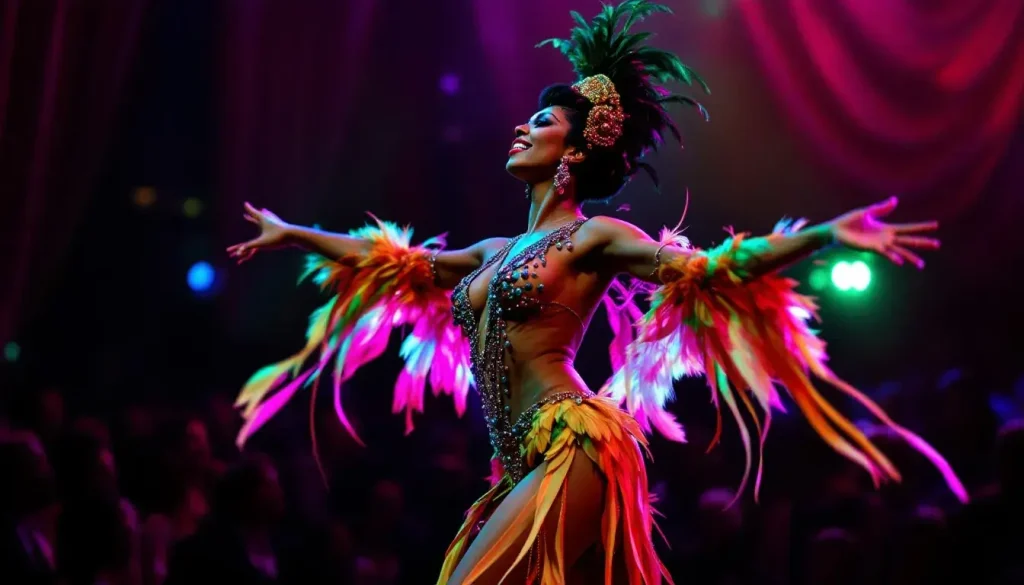
Josephine Baker’s name is synonymous with the exuberance and flair of jazz dance. With a daring and innovative style, Baker captivated audiences in Paris with her unique, body-centric performances. Her iconic ‘Banana Dance’ symbolizes her boldness and creativity, showcasing her ability to combine sensuality with artistry on Josephine Baker Day.
Baker fiercely advocated for racial equality, utilizing her platform with the national NAACP association to challenge segregation and racial barriers. She was also a prominent activist for the rights of colored people of color in the United States and Europe, working tirelessly to promote civil rights and social justice.
Throughout her 50-year career, she entertained and influenced the landscape of jazz dance, leaving a legacy that inspires dancers today. Early in her career, Baker performed with the Jones Family Band, where she honed her comedic and stage talents, marking the beginning of her rise in the entertainment world. Baker fought segregation and racial barriers.
Her influence and legacy extended into film, notably through her starring role in the 1943 movie Stormy Weather, which featured an all-Black cast and showcased Black talent in Hollywood.
During World War II, Baker contributed to the French Resistance, and in recognition of her distinguished service, she became the first American woman buried in France with military honors.
Katherine Dunham: Merging Anthropology and Dance
Katherine Dunham changed modern dance by integrating African and Caribbean dance styles into American forms. Her choreography uniquely blended polyrhythmic movement with expressive use of the torso and pelvis, defining what is now known as the Dunham Technique. This innovative approach enriched the artistic landscape and provided a deeper understanding of cultural dances.
Dunham’s influence extended beyond choreography; she founded the Katherine Dunham School of Dance and Theatre, a prominent training ground for future dancers. Her work bridged the gap between anthropology and dance, highlighting the cultural significance of traditional African dance forms and their relevance in modern dance, as exemplified by the Katherine Dunham Dance Company.
Alvin Ailey: Elevating African American Culture Through Dance
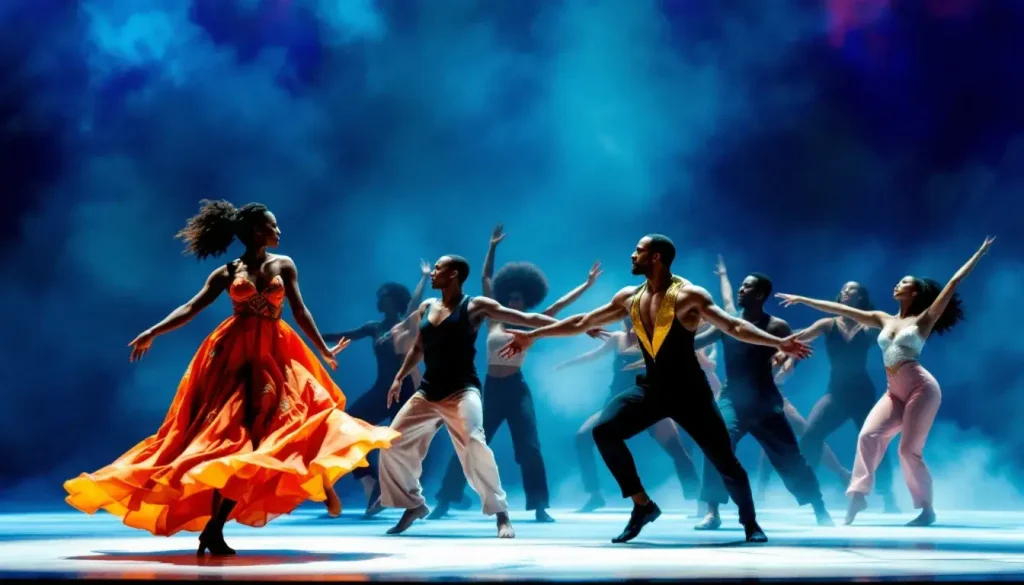
In 1958, Alvin Ailey founded the Alvin Ailey American Dance Theater, a company that would become a cornerstone of African American culture and a beacon of excellence in the dance world. Before this, Ailey received early training at the Lester Horton Dance Theater, a pioneering and racially integrated company.
Horton’s death in 1953 profoundly influenced Ailey, motivating him to preserve Horton’s legacy and establish his own company. Ailey’s vision was to create a space where African American dancers could thrive and share their stories through African American dance. His groundbreaking work ‘Revelations’ is celebrated for portraying the African American journey from slavery to freedom, inspired by Ailey’s childhood experiences.
After founding the Alvin Ailey American Dance Theater, Ailey established the Alvin Ailey Repertory Ensemble, now Ailey II, as a platform for emerging dancers to develop their artistry and gain professional experience.
‘Revelations’ has been performed in over 71 countries, making it the most viewed modern dance piece in history. The choreography and themes reflect elements of African American cultural traditions, including blues, work songs, and spirituals, resonating deeply with audiences worldwide. Ailey’s ‘blood memories’ concept underlines his work’s deep connection with his identity and heritage.
Ailey’s impact on dance transcended choreography, as he opened doors for African American performers in predominantly white venues. He also established The Ailey School, now the Ailey School, which stands as a leading institution for dance training and education. His legacy lives on through the Alvin Ailey American Dance Theater, continuing to inspire and elevate African American culture through dance.
Arthur Mitchell: Breaking Barriers in Ballet

Arthur Mitchell’s dance career exemplifies breaking barriers and challenging norms. As the first Black dancer at the New York City Ballet, he paved the way for future generations of African American dancers in classical ballet. His talent and determination shattered the color barrier in a predominantly white art form, earning him a place in the history of ballet. The significance of pointe shoes as a symbol of inclusion and progress is especially notable. Black dancers’ access to pointe shoes in various skin tones represents a meaningful step toward greater diversity and representation in classical ballet.
In 1969, Mitchell founded the Dance Theatre of Harlem, addressing racial prejudice in ballet and creating opportunities for African American dancers. The company initially had a neoclassical repertory and has been instrumental in promoting diversity in ballet, offering a platform for black dancers to showcase their talent on the world stage while teaching dance.
Pearl Primus: Integrating African Dance into American Modern Dance
Pearl Primus’s integration of African dance into American modern dance is unparalleled. Her extensive research in Africa enabled her to study dance and learn traditional dances firsthand, which she later adapted for American audiences. Primus developed a unique notation system to document these dances, preserving their authenticity and cultural significance.
Primus’s performances were characterized by dynamic jumps and expressive movements, captivating audiences and shifting perspectives on African dance. Her choreography often addressed significant social issues, reflecting the struggles and culture of the African American community, thus promoting African dance as a respected art form in the U.S. The way she danced highlighted the beauty and depth of this cultural expression, much like the work of African dancers, incorporating themes from African American culture.
The Nicholas Brothers: Masters of Tap Dance
Fayard and Harold Nicholas, known as the Nicholas Brothers, were tap dance masters who blended their art form with acrobatics and jazz to create explosive and elegant performances. Their unique combination of styles made them renowned performers, captivating audiences for over sixty years with their rhythmic complexity and expressive movement. During the Harlem Renaissance, the Nicholas Brothers were featured performers at the Cotton Club, a legendary Harlem nightclub that showcased the leading African American talent of the era.
Their legacy in tap dance is celebrated for its innovation and joyous energy. The Nicholas Brothers’ choreography remains a benchmark for tap dancers worldwide, showcasing the limitless possibilities of this dynamic art form.
John Bubbles: Innovator of Rhythm Tap
John Bubbles revolutionized tap dance with his innovative style and intricate rhythms. Beginning his career at just 10, Bubbles quickly gained recognition for his unique approach to tap dancing. He was best known for his partnership with Ford Lee ‘Buck’ Washington as the vaudeville duo ‘Buck and Bubbles.’ He emphasized offbeat heel drops and complex syncopations, extending rhythmic phrases beyond the traditional eight-bar structure, thus transforming the art of tap dance.
His influence is evident in how modern tap dancers approach rhythm and movement, making Bubbles a pivotal figure in the evolution of tap dance. His contributions have left an indelible mark on the dance world, inspiring future generations to push the boundaries of what tap dancing can be. John Bubbles was also one of the first African American performers to appear at Radio City Music Hall, breaking racial barriers in major venues and paving the way for other black artists.
Alice Barker & The Sepia Steppers
Alice Barker, a member of The Sepia Steppers, showcased her talent in tap dance through several short musical films, known as “soundies,” in the 1940s. The Sepia Steppers, an all-female tap dance group, were renowned for their innovative performances, featuring famous soundies such as ‘Stepping Along’ and ‘Toot That Trumpet’. The Sepia Steppers often performed in productions featuring an all Black cast, highlighting the importance of representation in entertainment. Despite their significant contributions, much of their story has been overlooked in the historical narrative of dance.
Barker also made a significant television appearance on The Frank Sinatra Show, making her one of the early African American dancers to perform on national prime time TV. Her legacy, along with that of The Sepia Steppers, remains an important chapter in the history of tap dancing.
Janet Collins: First Black Principal Dancer at Metropolitan Opera
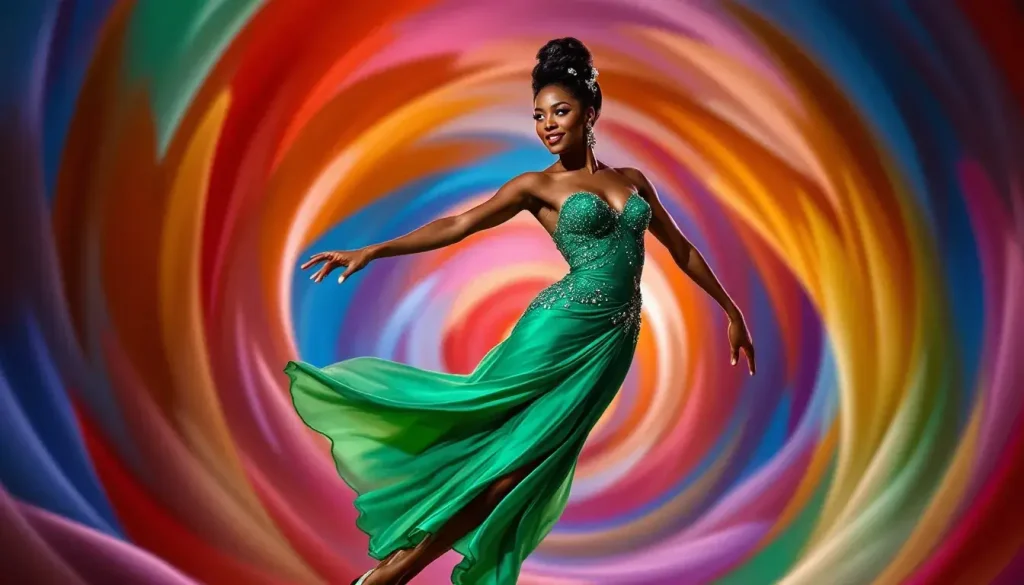
Janet Collins broke new ground as the first Black principal dancer at the Metropolitan Opera, making her debut in the production of ‘Aïda’ in 1951. As a Black woman breaking barriers in ballet, she became a trailblazer whose achievements inspired countless others. Her performances in operas like “Carmen” and “Samson et Dalila” received significant acclaim, showcasing her exceptional talent and paving the way for future generations of Black dancers.
Born in 1917, Collins began her dancing career in Los Angeles, where her talents were first recognized. Her legacy continues to inspire, emphasizing the importance of diversity and representation in ballet and opera. The New York Public Library holds archival materials and biographies documenting Janet Collins’s career.
Virginia Johnson: Leading Dance Theatre of Harlem

Virginia Johnson, a founding member and principal ballerina of the Dance Theatre of Harlem, dedicated nearly three decades to the organization. Trained at the Washington School of Ballet under notable instructors, she gained recognition as a leading ballerina of her time.
The Dance Theatre of Harlem, founded in response to racial injustices during the civil rights movement, gained international acclaim and was recognized for its commitment to diversity. The company, the first American ballet group to perform in Russia since the Soviet Union, showcased the talent of black dancers on a global stage, similar to the American Ballet Theatre, and highlighted the importance of black dance.
Lauren Anderson: Inspiring Future Ballerinas
Lauren Anderson made history as Houston Ballet’s first African American principal ballerina in 1990, breaking new ground in the dance world. After retiring in 2006, she assumed the role of program manager for community engagement at Houston Ballet, focusing on inspiring and mentoring young African American dancers.
Anderson emphasizes creating an inspiring atmosphere in master classes, focusing on musicality, relaxation, and control. Her performance in The Nutcracker inspires young dancers of color, encouraging them to pursue their dreams despite the challenges they face and achieve the same renown as their peers.
Charlotte Nebres: #BlackDanceHistoryIsHappeningNow
Charlotte Nebres is a contemporary dancer dedicated to representing Black artists in the dance industry and inspiring future generations. She believes the increasing visibility of Black ballerinas motivates more children from diverse backgrounds to pursue dance.
In recent decades, hip hop has played a significant role in influencing young Black dancers, intersecting with traditional jazz and tap, and contributing to the evolution of dance styles and the cultural landscape for African American youth.
Nebres has also authored a book titled ‘Charlotte and the Nutcracker,’ which reimagines the classic story through her unique perspective. Her work and perseverance against racism continue to inspire and shape the dance world, showing that #BlackDanceHistoryIsHappeningNow.
Preserving Dance History: Honoring the Legacy
Preserving the rich history of African American dance is vital to honoring the trailblazers who have shaped the dance world. Organizations such as the Alvin Ailey American Dance Theater, Dance Theatre of Harlem, and the International Association of Blacks in Dance are at the forefront of this mission, working tirelessly to document, promote, and celebrate black dance history. Their efforts ensure that the achievements of African American dancers and choreographers are recognized and remembered.
Major institutions like the New York City Ballet and American Ballet Theatre have also taken steps to increase diversity and inclusivity, providing more opportunities for black dancers to shine on some of the world’s most prestigious stages. These companies, along with the Ailey American Dance Theater, are helping to rewrite the narrative of American dance, making it more representative of the country’s rich cultural mosaic.
By preserving dance history, we honor the legacy of African American dancers and inspire future generations to pursue their dreams. The stories, performances, and innovations of these artists are a testament to the power of dance as a vehicle for cultural expression, social change, and artistic excellence. As the dance world continues to evolve, remembering and celebrating black dance ensures that its impact endures for years to come.
The Future of Dance: Inspiring the Next Generation
The future of dance is being shaped by a new generation of talented African American dancers and choreographers redefining what is possible in the dance world. Programs promoting arts education, such as the Ailey School, the Dance Theatre of Harlem’s outreach initiatives, and the American Ballet Theatre, play a crucial role in nurturing young talent and providing pathways to professional success. These programs teach technical skills and foster creativity, confidence, and a deep appreciation of the art form.
In today’s digital age, social media and online platforms have opened up new avenues for black dancers to share their artistry, connect with audiences, and gain recognition on a global scale. This increased visibility is helping to break down barriers and create more opportunities for African American dancers to make their mark in American dance and beyond.
As we look to the future, we must continue advocating for diversity, equity, and inclusion in all areas of the dance world. By supporting programs promoting the arts and celebrating the achievements of African American dancers, we ensure that the legacy of black dance history remains vibrant and influential. The next generation of dancers and choreographers will carry this legacy forward, inspiring audiences and shaping the future of dance for years to come.
African-American Dance Icons Who Redefined History
| Legendary Dancer | Signature Work / Style | Ground-Shifting Impact |
|---|---|---|
| Katherine Dunham | Invented the Afro-Caribbean–based “Dunham Technique.” Choreographed concert pieces that fused ritual, ballet, and modern vocabularies. | Mainstreamed African-diasporic movement in U.S. concert dance and proved that scholarly fieldwork could drive choreography. |
| Bill “Bojangles” Robinson | Silky, upright tap phrasing—iconic staircase duets with Shirley Temple and the first Black solo star of Broadway revues. | Broke Blackface conventions, opened Broadway and Hollywood to Black tap artists, and set the tap-dance aesthetic still referenced today. |
| Pearl Primus | Social-justice–charged modern works such as Strange Fruit and field-researched African dances. | Championed authentic African forms on U.S. stages and used dance as a protest against racism and colonialism. |
| Alvin Ailey | Spiritual-soaked masterpiece “Revelations” (1960) for Alvin Ailey American Dance Theater. | Turned a Black modern troupe into a global cultural envoy and centered Black history in mainstream concert dance. |
| Arthur Mitchell | Groundbreaking roles at NYCB and founding of Dance Theatre of Harlem (1969). | First Black principal in major U.S. ballet; built the world’s first permanent Black classical ballet company. |
| Misty Copeland | Athletic lyricism in classics like Swan Lake, promoted to ABT principal in 2015. | Shattered the color barrier for Black women in elite U.S. ballet and became a pop-culture icon for diversity. |
Resume
The contributions of these legendary African American dancers have enriched the dance world, challenging and transforming societal norms. From the trailblazing performances of Josephine Baker to the contemporary influence of Charlotte Nebres, their legacies continue to inspire and pave the way for future generations of dancers.
As we celebrate their achievements, we recognize the importance of diversity and representation in dance. These artists have shown that dance is a powerful medium for expressing culture, challenging prejudices, and inspiring change. Their stories remind us that the dance journey is ever-evolving, and the contributions of African American dancers are vital to its continued growth and enrichment.
Frequently Asked Questions
Who was the first Black principal dancer at the Metropolitan Opera?
Janet Collins was the first Black principal dancer at the Metropolitan Opera, debuting in ‘Aïda’ in 1951.
What is the importance of Alvin Ailey’s ‘Revelations’?
Alvin Ailey’s ‘Revelations’ is significant for its powerful representation of the African American experience, depicting the journey from slavery to freedom, and its remarkable global reach as the most widely viewed modern dance piece in history. Its impact resonates deeply, illustrating cultural heritage through movement.
How did Katherine Dunham contribute to modern dance?
Katherine Dunham contributed to modern dance by integrating African and Caribbean dance styles into American forms and developing the Dunham Technique. Her establishment of the Katherine Dunham School of Dance and Theatre further advanced dance education and cultural representation.
What impact did Arthur Mitchell have on ballet?
Arthur Mitchell significantly impacted ballet by becoming the first Black dancer at the New York City Ballet and founding the Dance Theatre of Harlem, which aimed to combat racial prejudice and enhance diversity within the art form.
How did Pearl Primus influence American modern dance?
Pearl Primus significantly influenced American modern dance by incorporating traditional African dance elements and addressing social issues through her performances. Her development of a unique notation system further enriched the landscape of choreography.
What obstacles did Black dancers face when auditioning for major U.S. ballet schools before the Civil Rights era?
Many academies enforced written or unwritten color lines that barred Black applicants outright or relegated them to separate classes, forcing talented dancers to seek private instruction or community studios instead of the established schools.
How did segregation laws shape the touring routes of early Black ballet companies?
Because theaters, hotels, and restaurants were often segregated, Black ensembles routed tours through churches, union halls, and historically Black colleges, limiting box-office revenue and mainstream press coverage.
Why is Janet Collins’ 1951 debut at the Metropolitan Opera historically significant?
Her appearance broke a decades-long color barrier, making her the first Black prima ballerina to perform with the Metropolitan Opera Ballet and proving that audiences would embrace star dancers of color in classical roles.
What lasting impact did Arthur Mitchell’s Dance Theatre of Harlem have on the ballet world?
Founded in 1969, the company paired rigorous classical training with international touring, demonstrating that full-length ballets could thrive outside Eurocentric traditions and offering a professional home for hundreds of Black dancers.
When did dancewear brands begin producing pointe shoes in deeper skin tones?
The shift gained momentum in the late 2010s, when multiple manufacturers introduced cappuccino-, mocha-, and espresso-colored shoes so dancers no longer had to pancake or spray-paint standard pink satin.
How has the natural-hair movement influenced backstage styling norms?
More companies now accept textured buns, twists, and protective styles, allowing Black dancers to prioritize hair health over chemically straightening to conform to Eurocentric aesthetics.
Do Historically Black Colleges and Universities offer formal ballet degrees?
Yes—several HBCUs house dance programs that combine Vaganova-based training with African-diasporic forms, giving students a dual foundation in classical technique and cultural heritage.
Why is mentorship essential for retaining Black talent in pre-professional ballet tracks?
Pairing students with seasoned Black professionals helps ease cultural isolation, counters audition bias, and guides navigating body image pressures, thereby significantly reducing dropout rates.
How have Black male dancers reshaped perceptions of masculinity in ballet?
Artists from Arthur Mitchell to Desmond Richardson fused explosive athleticism with refined épaulement, broadening the archetype of the prince or cavalier and challenging stereotypes about strength versus grace.
Which contemporary choreographers weave African-diasporic rhythms into pointe-shoe vocabulary?
Kyle Abraham, Dwight Rhoden, and Claudia Schreier frequently blend hip-hop pulses, West African polyrhythms, and jazz syncopations with classical footwork, demanding new versatility from dancers and companies alike.
How has the Black Lives Matter movement influenced main-stage programming since 2020?
Many companies have commissioned works by Black choreographers, staged ballets centered on African American history, and reviewed repertories to retire productions that rely on outdated racial caricatures.
What scholarships specifically support young Black students in ballet?
Organizations such as Brown Girls Do Ballet and The International Association of Blacks in Dance offer tuition assistance, summer intensive grants, and mentorship networks to reduce financial barriers.
How are classic story ballets being reimagined to accommodate diverse casts?
Directors reset narratives in neutral fantasy realms, neutralize Eurocentric village settings, and adjust character arcs to remove exoticism, enabling dancers of all backgrounds to perform principal roles authentically.
What challenges do Black dancers still encounter on the international festival circuit?
Visa delays, limited guest-artist slots, and persistent aesthetic biases in some European competitions can restrict opportunities, prompting many dancers to tour with U.S. troupes instead of auditioning independently.
Why do shade-inclusive tights and shoes improve onstage performance?
Color-matched footwear eliminates distracting visual breaks, allowing adjudicators to focus on technique, and saves dancers hours spent on pancaking or spray-painting gear before rehearsals and shows.
How has Alvin Ailey American Dance Theater intersected with classical ballet technique?
The repertoire layers Horton’s modern lines and jazz isolations over classical port de bras, and the affiliated school mandates daily ballet class so company members can perform pointe work alongside modern phrases.
What role do community archives play in preserving early Black ballet history?
Digital collections, such as MOB Ballet’s Roll Call and independent oral-history projects, safeguard photographs, program notes, and personal narratives that traditional dance archives once overlooked.
How are ballet companies addressing the financial burden of dyeing shoes and tights?
Several companies now cover the cost of shade-inclusive dancewear in their budgets, treating it as an essential uniform rather than an individual expense.
What systemic changes are major U.S. companies adopting to foster racial equity?
Beyond hiring more dancers of color, companies have established diversity councils, re-examined their casting policies, and implemented bias-training workshops for both artistic and administrative staff.
How do outreach programs in predominantly Black neighborhoods influence the ballet pipeline?
Free introductory classes, ticket subsidies, and school-partnership residencies expose young students to ballet early, expanding the pool of aspirants who might otherwise never encounter the art form.
